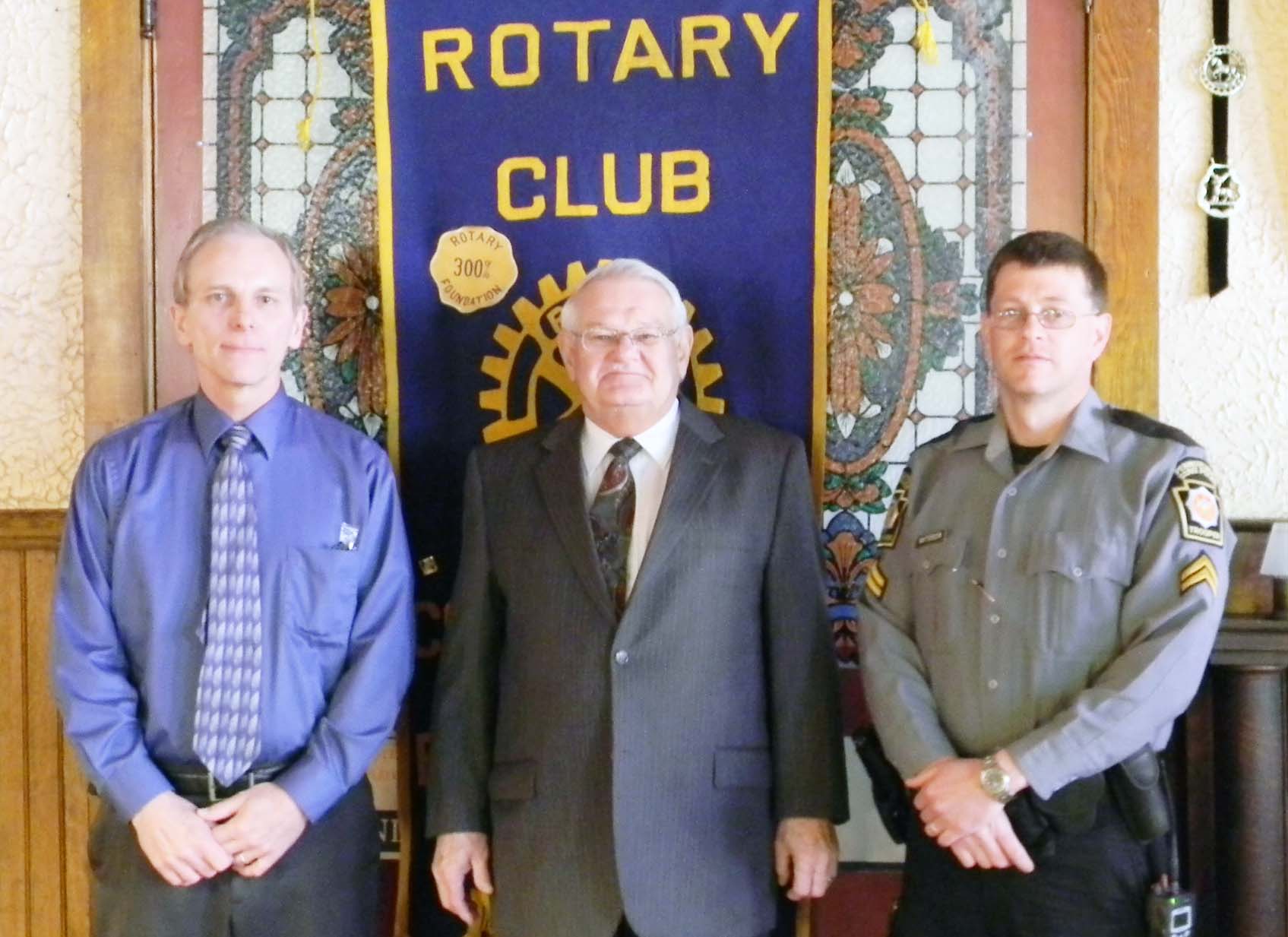Rotary Club learns about state police
2 min read

Sgt. Larry Goodwin, left, gave a presentation to the Coudersport Rotary Club about the Pennsylvania State Police. Goodwin is a Potter County native and is stationed at the Coudersport barracks. In middle is D. Bruce Cahilly, Rotary Club member, and, at right, is Trooper Sean Batterson.
The Coudersport Rotary Club recently heard a presentation from Sgt. Larry Goodwin of the Pennsylvania State Police. Goodwin works out of the Coudersport barracks, located on Denton Hill.
Goodwin, who was born and raised in Coudersport, detailed his rise to serving as Sergeant at the Coudersport barracks. He first served as trooper, handling incidents and responding to calls, before he served as criminal supervisor for five years in Coudersport. He was then transferred to the Emporium barracks before being promoted to sergeant and send to Warren. He then put in a request to transfer back to Coudersport.
“It is nice to be back,” Goodwin said. “This is my home. I am happy to be here and proud to be home.”
Troopers serve on the road handling incidents and responding to calls, patrol corporals oversee all areas of incident and crime corporals oversee investigations. The state police organization was formed on May 2, 1905, and there are currently 4,600 troopers with a support staff of 16,000 civilians. The organization is divided into four areas with 16 troops operating 90 stations, where the lieutenant or sergeant are in charge. The organization covers 85 percent of the state, including 66 percent of highways and is 19 percent of the law enforcement units in the state.
Goodwin’s presentation focused on how technology has changed how the law enforcement detail performs its tasks and the various levels of service. When he first became a trooper, manual typewriters were common whereas the troopers use computers now. In addition, the cars have computers, along with audio and video. The barracks also performs video arraignment, GPS is used to track state police vehicles and the radios operate on their own frequency.